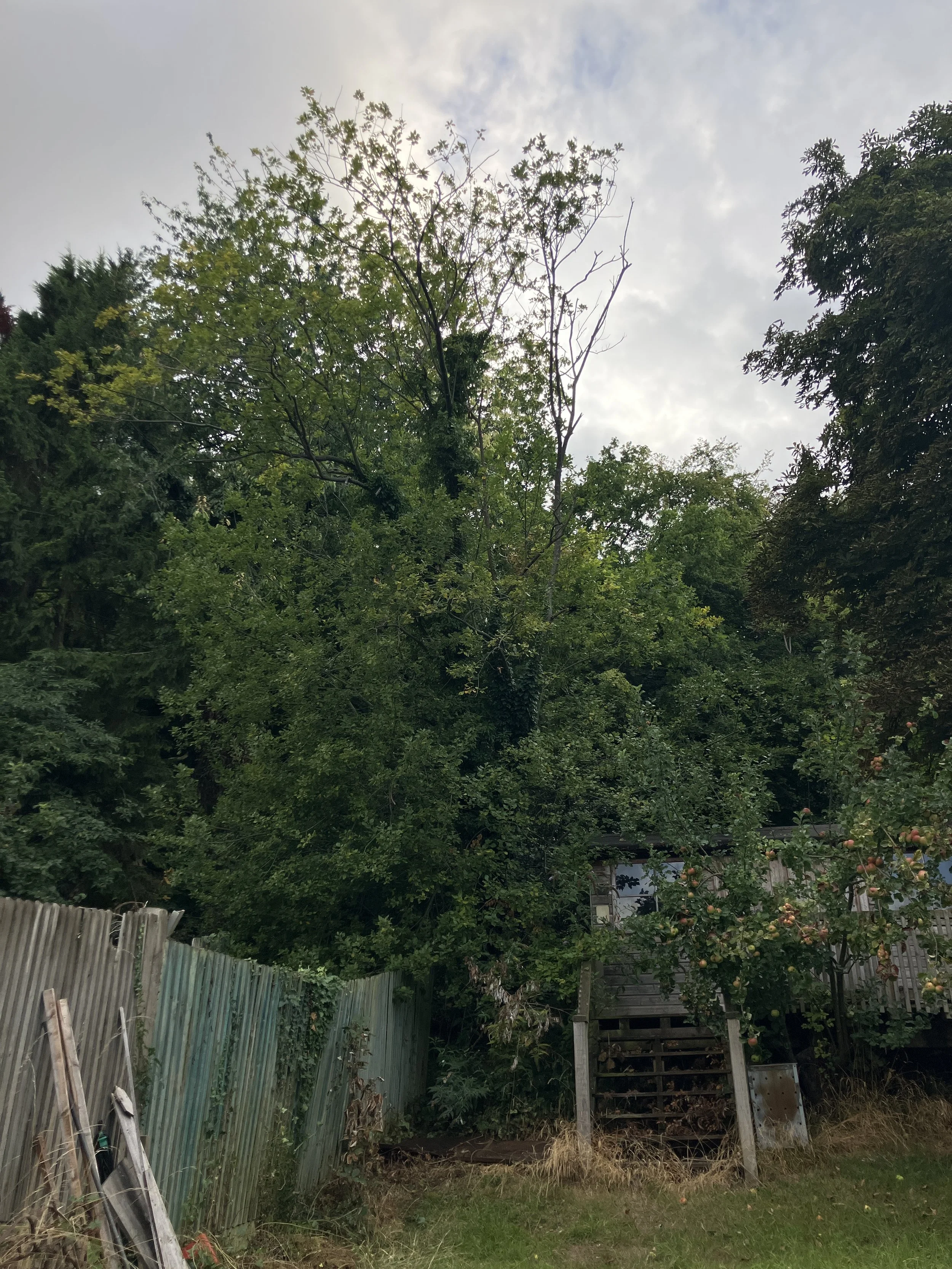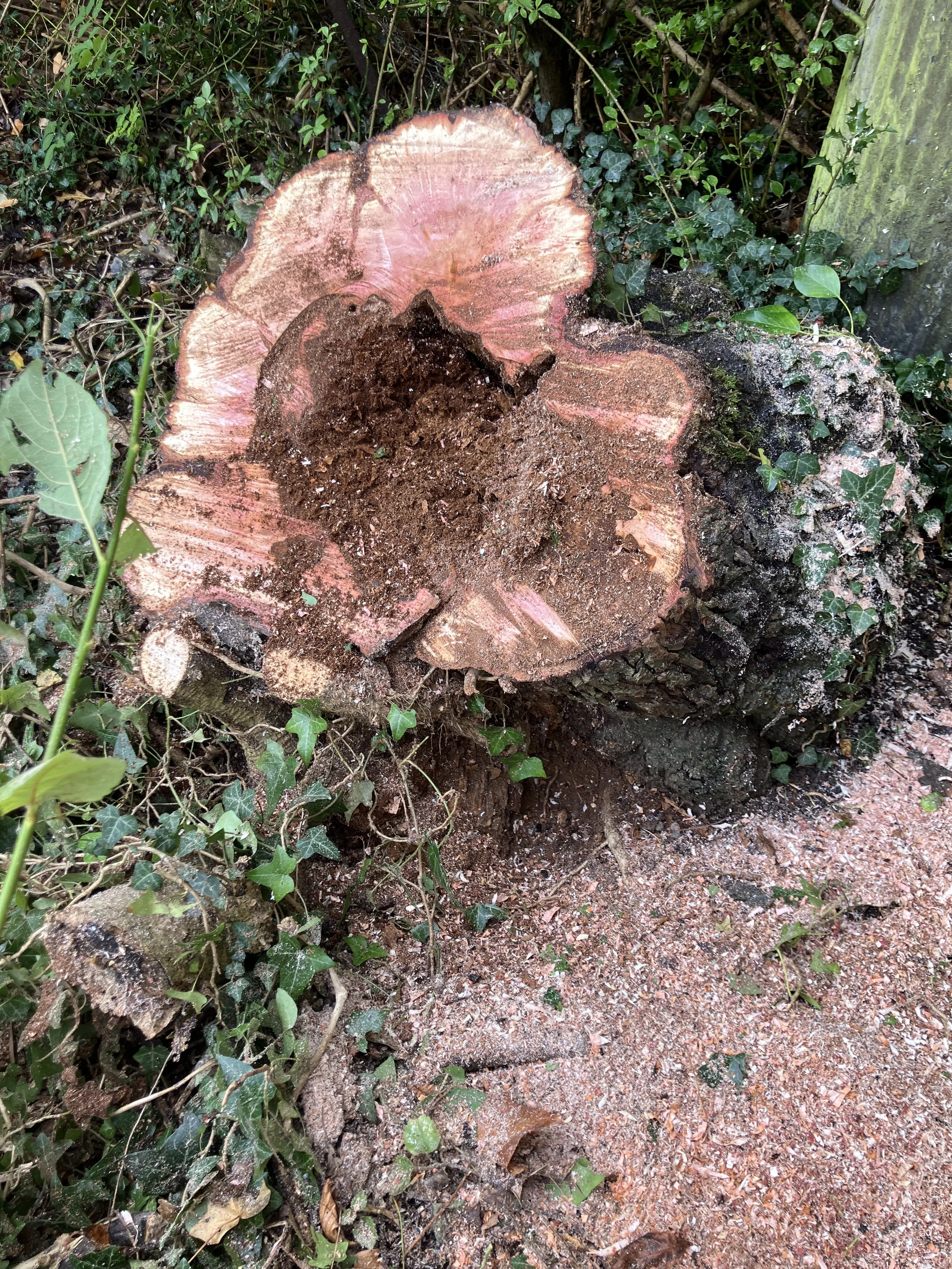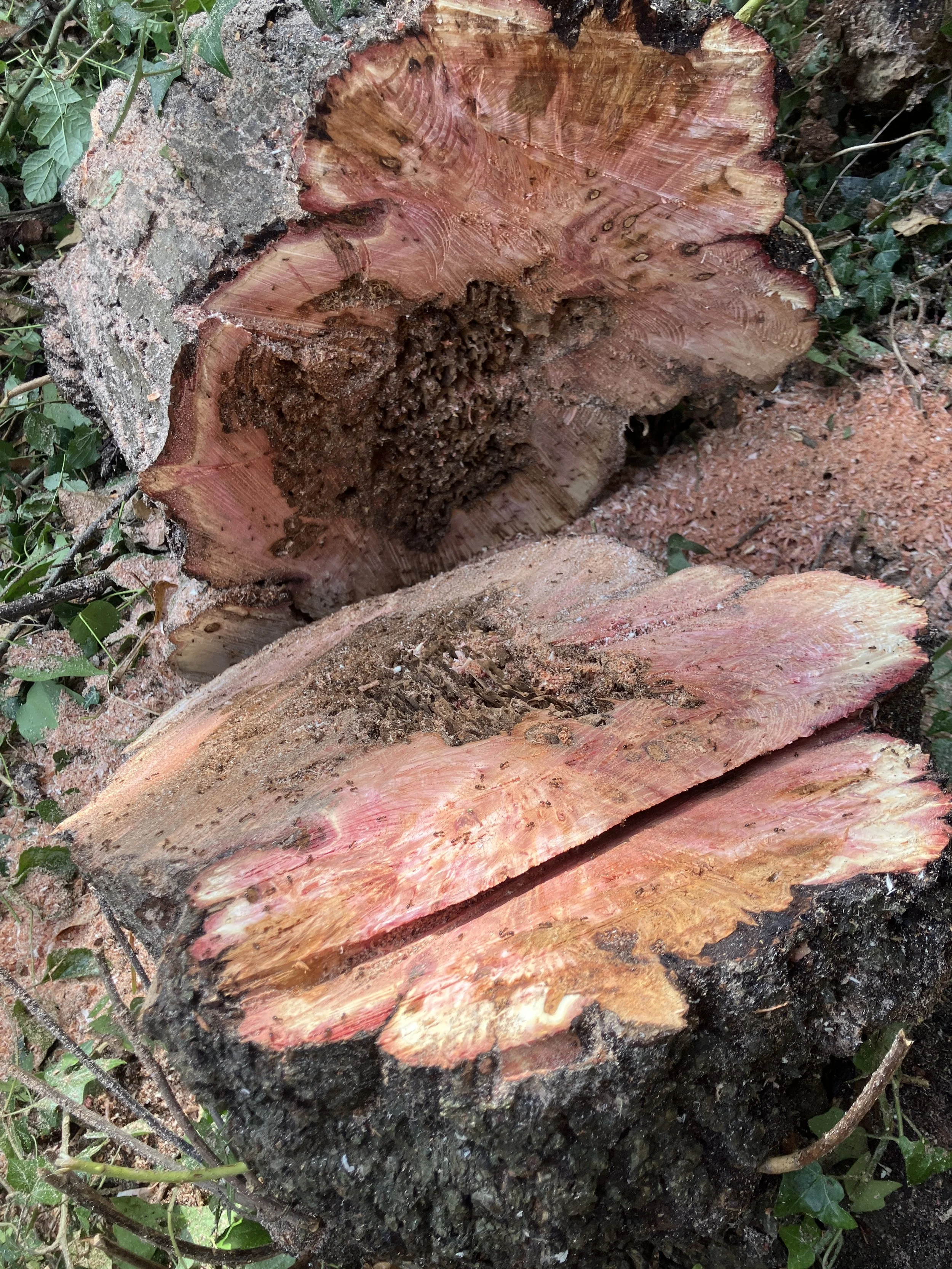Goat Willow Removal – Safety First
We were called into Marlow Bottom to inspect a mature Goat Willow after the owners noticed that the tree had been leaning progressively lower over the past couple of years.
On inspection, we found several issues that highlighted the tree’s instability and potential risk:
Sparse upper crown and dieback – The top of the tree showed clear signs of decline.
Ivy growth along the main stem – Adding significant weight and potentially restricting the tree, although it may also have been helping hold the structure together.
Decay and cavity at the base – A large cavity was found extending 1.5m up the main stem.
Signs of uprooting – The uphill side of the tree had loose soil, suggesting root plate movement.
In addition, neighbours had raised concerns about the tree’s condition and the potential danger it posed. Taking all of this into account, we advised that the safest option was to remove the Goat Willow.
During the dismantling process, our findings confirmed the extent of the tree’s instability:
Much of the crown was in advanced decline.
A large section of the stem had completely died.
Branches were brittle and detaching.
The base was hollow, offering very little structural support.
Removing the tree was the most responsible course of action, eliminating the risk of failure and safeguarding the property and neighbours.



